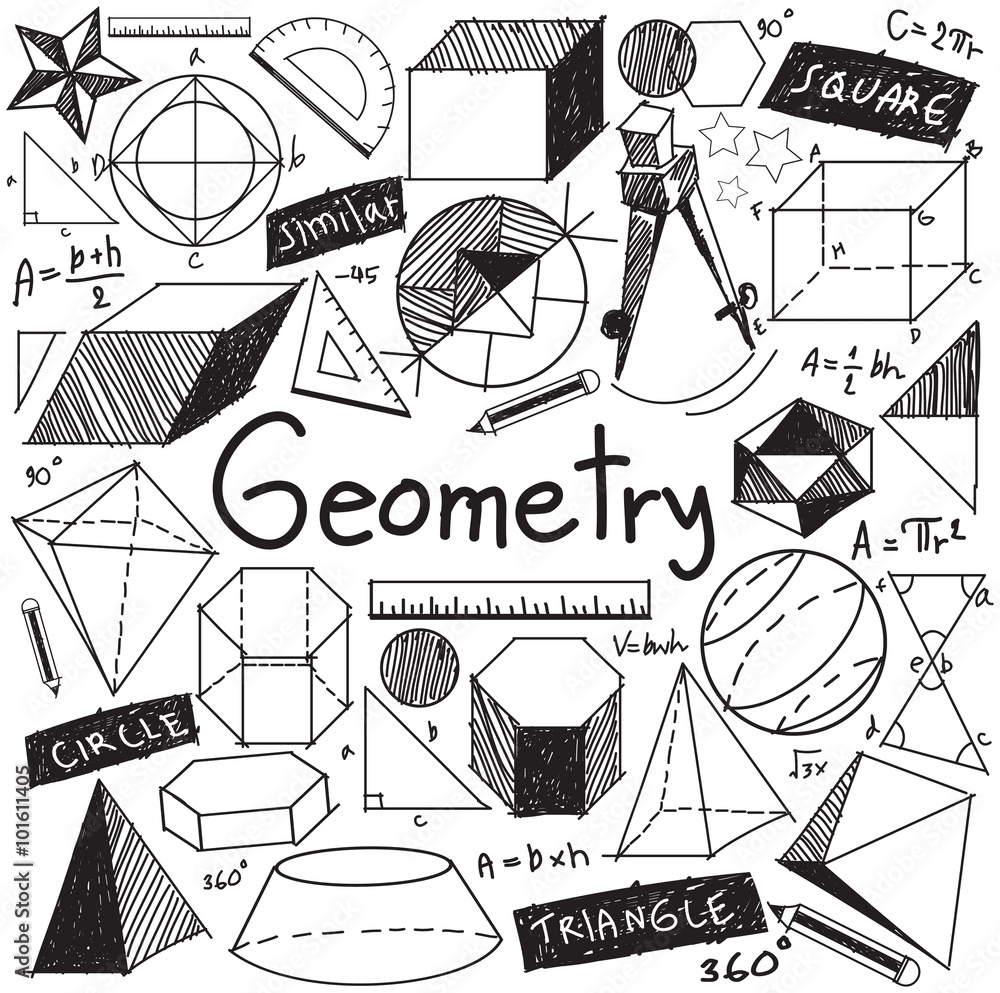What is geometry?
Geometry helps you understand shapes, sizes, and the relationships between objects in space. These skills are useful for solving real-world problems, such as measuring areas, calculating distances, or even designing structures. Geometry plays a key role in fields like architecture, engineering, and art, helping you make sense of the space around you.
Who is the course suitable for?
Geometry is suitable for students in Grade 5 to Grade 10. At these levels, students start to explore the foundational concepts of geometry. Depending on the grade the difficulty level will differentiate.
How does the course work?
This category is divided into 3 sub-categories. After a lesson students will be able to refine their skills by using Google Classroom with the support of their tutor. Students will also be able to go back and review important notes from completed lessons.
How do I dedicate a specific topic within my package?
You will be able to designate the hours included in your package to certain topics.
How much time should be dedicated to a topic or a category?
Depending on the student, the amount of time needed will vary. As your lessons progress, your tutor will guide you on when it is okay to move on to the next topic and will work with you to adjust based on your individual needs and progress.
Before starting the course you will be consulted via a Skype video call so that I can:
1. Learn more about you.
2. Show you how to use/set up Google Classroom and Khan Academy.
3. Help you set lessons, dates, times, and achievable goals.
4. Allow you to become more comfortable within the online learning environment.
What do I need to learn online?
Learning online is effective and convenient. It's most likely that you already have:
1. An internet connection with a speed of 10mbps.
2. A computer or laptop.
3. A webcam (preferred, but not necessary).
4. A comfortable spot in your home.
5. An email address.

What are the 3 sub-categories within Algebra?
How can they help me? What will I learn?
1. Basic Shape and Measurement Concepts
Understanding basic shape and measurement concepts helps you make sense of the world around you. By recognizing different shapes and knowing how to measure things, you can solve practical problems in everyday life, like planning a room layout, cooking with accurate measurements, or even tackling DIY projects. These skills are useful for organizing, designing, and making informed decisions, whether you're building something, shopping, or simply figuring out how much space you need. In short, it gives you the tools to work efficiently and confidently in a variety of situations.
Each Topic Will Teach You How To:
Identify and classify different shapes and their properties: This helps you understand how shapes are structured, making it easier to recognize and work with them in everyday life and other subjects like design and architecture.
Calculate the perimeter and area of 2D shapes (like squares, rectangles, and circles): Knowing how to measure shapes' edges and spaces helps in real-world tasks such as calculating space for furniture or understanding maps.
Measure and understand angles: This skill is useful for understanding direction, constructing objects, and working with tools, as well as for higher-level math concepts.
2. Advanced 2D and 3D Geometry
Advanced 2D and 3D geometry helps you understand more complex shapes and spaces, both flat and in three dimensions. This knowledge is essential for solving problems in areas like architecture, engineering, and design, where you need to calculate areas, volumes, and angles. It allows you to visualize and work with objects in the real world, whether you're designing a building, creating 3D models, or understanding how objects fit together in space. With these skills, you can approach more sophisticated challenges with confidence and precision.
Each Topic Will Teach You How To:
Apply the Pythagorean Theorem to find distances in right triangles: This is essential for solving problems related to navigation, construction, and any situation that involves right angles.
Calculate the volume and surface area of 3D shapes (like cubes, spheres, and cones): Knowing how to measure the space inside objects (volume) and their surface (area) is key for fields like engineering, architecture, and design.
Use geometric formulas to solve problems: These formulas allow you to solve practical problems related to space, structures, and measurements, applying what you learn to real-world scenarios.
3. Symmetry, Graphs, and Real-World Applications
Symmetry, graphs, and real-world applications help you recognize patterns, make sense of data, and apply math to everyday situations. Symmetry allows you to identify balance and repetition in nature, art, and design. Graphs help you visualize information, making it easier to understand trends, compare data, or predict outcomes. In real-world applications, these concepts help solve problems in fields like engineering, economics, and science, where understanding patterns and data is crucial. Together, they make it easier to approach complex tasks and make informed decisions in daily life.
Each Topic Will Teach You How To:
Use coordinates and graphs to solve geometry problems: This skill is crucial for interpreting data, creating accurate maps, and visualizing geometric relationships in math and everyday tasks.
Understand and apply concepts of symmetry, reflection, and rotation: These concepts help you with tasks in art, design, and nature, where symmetry and patterns are important.
Visualize geometry concepts in real-life scenarios like architecture and design: Understanding how geometry applies in real life, such as designing buildings or planning layouts, connects abstract math to practical, everyday use.

